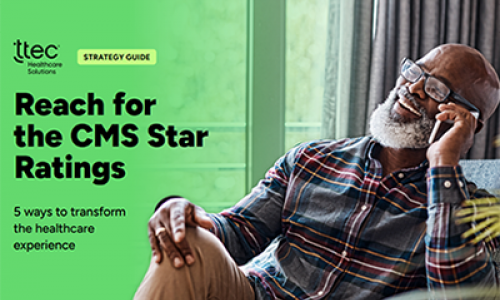Messaging is tricky with texts triggered by the most inconsequential encounters of daily life like buying a cup of coffee or getting stamps at the Post Office.
Yes, experiences matter in every interaction but when messages shriek, “How did we do?!” and “Post a review on Yelp!” and “Take a survey now!” it’s self-serving and often unwelcome. With 63,644 texts exchanged every second in the U.S., it can be a bit much.
Here’s where the healthcare sector has an advantage over others.
In textspeak, it’s FTW or “for the win”: An intelligent and flexible messaging strategy that puts patients at the center gives health plans, medical supply distributors, and health systems an edge over competitors that fail to leverage this channel. Personalized and proactive messaging improves health outcomes—especially for underserved populations—and it helps our clients achieve their objectives in ways no one could have expected years ago.
Today, 65% of consumers want the ability to message with brands, according to the CX Trends 2023 report. That’s in stark contrast to a decade ago, when Pew Research reported a paltry 31% preferred text over the voice channel. The key to engaging in this channel is to craft a strategy that creates an outstanding experience for commerce and care, one that helps people accomplish what they want to do.
Omnichannel? Yes! The kitchen sink? Nope.
An omnichannel messaging approach is vital for all healthcare businesses. That’s a given. However, the messaging features and functionality to deploy—or avoid and save for later—vary according to the business model. Before we dive into the best opportunities for three types of healthcare businesses to drive loyalty, revenue, cost savings, and compliance, consider this: even with the high volume of text traffic, the open rate for messages is 98%, according to wireless trade association CTIA.
Are you optimizing the text channel? If you’re not sure, here’s how companies can deliver on their customers’ rising expectations while at the same time improve operations and the bottom line.
Meet them where they want to be met: Medical supply distributors serving patients on an ongoing basis with products such as catheters, incontinence, and diabetes management supplies, have a great opportunity to meet patients where they want to be met—in the messaging channel.
While customers expect an Amazon-like experience ordering products online, medical supply companies have an obligation Amazon doesn’t: all orders must be confirmed before shipment, a process that can be accelerated, in compliant and secure fashion, via messaging. This data-collection task is not insignificant because the supplier often confirms the member need prior to obtaining updated medical documentation, prescriptions, prior authorizations, and verifying benefits.
With information collected quickly, suppliers can ship faster—enhancing customer loyalty and confidence—and reduce processing and shipping cost up to 66%. Revenue per patient improves, too, as retention rises. Suppliers can also use the messaging channel to convey medical policy updates, product launches, sunsets, and recalls, and to educate consumers about therapy adherence that improves health outcomes.
Make the grade: Health plans of every type strive to connect with members more easily and messaging is a proven way to book routine appointments, preventative screenings, and tests. At least half of patients prefer scheduling an appointment via text and 66% welcome appointment reminders via text.
Security of sensitive data is of paramount importance and there are challenges here; 87% of consumers won’t do business with a company if they are worried about security, McKinsey reports.
Thoughtful messaging that’s centered around plan members’ needs earns better customer satisfaction rates, HEDIS scores, and 5 Star CMS ratings. Remember, most consumers (69%) appreciate personalization so long as it’s based on data they have explicitly shared.
Post-COVID catchup: Health systems struggled financially during early days of the pandemic and continue to face challenges today as patients who postponed care are now trying to get back on track. Messaging is not only a great way to reconnect with patients but it’s an effective, cost-efficient tool to encourage patients to schedule screenings and tests that will improve their health outcomes.
Patients are receptive: More than 95% of patients who received text message updates felt more connected to their care team, reports the Journal of the American Academy of Orthopaedic Surgeons (AAOS.)
An omnichannel approach to messaging improves health outcomes, compliance, and revenue streams for all types of healthcare constituencies. At TTEC, we’ve developed Centers of Excellence in this discipline, which is home to best practices and solutions to securely manage two-way, asynchronous messaging. Our approach creates a culture of compliance, high adherence to standards at every touchpoint. We not only have proven strategies and solutions—always technology-agnostic—but we also have the human resources to make it happen through TTEC Engage and TTEC Digital.
FTW: Messaging (done right) is a powerful engagement opportunity for healthcare


March 9, 2023
by Cullen Barney,
Vice President, TTEC Healthcare Solutions
Vice President, TTEC Healthcare Solutions





